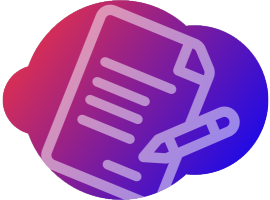Uk Essay Writing Service
If you are a student, you must have come over a situation when all your endeavors in writing the paperwork are still not enough for getting high grades. Disappointed, you ask yourself “What can I do to improve my result quickly?” or more often you mean “Who can write an excellent essay for me?”
Earn While You Play Game Aviator: Your Path to Affordable Essay Writing
If you are a student facing the challenge of tight finances but in need of well-crafted essays, consider this unique opportunity. With Game Aviator, you can not only enjoy an exciting gaming experience but also earn the funds necessary to order essays throughout your academic journey.
Being a student often leads to situations where your academic efforts may not yield the high grades you desire. You might find yourself pondering, "How can I quickly improve my results?" or more commonly, "Who can write an excellent essay for me?"
We understand the multitude of reasons that might lead you to seek assistance from a legitimate essay writing service. Each day, students encounter an overwhelming number of tasks. While one need not be a professional writer to compose an average essay, following the traditional school-taught approach often falls short. Professors increasingly demand creativity, fresh ideas, unexplored perspectives, and even contradictions. Simultaneously, they leave students with less and less time to accomplish these tasks. The result is often dissatisfaction for both students and professors, as the academic demands seem to grow unfairly.
We are aware of all the reasons why you may need help from legal essay writing service and we’ll definitely do any task qualitatively and fast in online regime!
Every day students come over a significant number of tasks. Of course one does not have to be a professional writer to make up an average essay using the scheme that each of us has been taught in school, but in the majority of cases it doesn’t work because the professors demand more and more creativity and fresh ideas, undiscovered and even contradictory opinions and leave to the students less and less time. A professor is not satisfied with the essay, and you are not satisfied with the result of your work. it also can be that you work all night long and get only “satisfied” because you don’t manage to fit the demands of the educational system. it all sounds very unfair, but fortunately, we know how to help you.
The Reasons Why You May Need Cheap and Fast Help from Our Top Essay Writing Service
- A lack of time which may influence on the quality of your essay and the ability to write it;
- A lack of interest in the given topic;
- Unawareness of the subject of your essay;
- A lack of motivation or you may not consider the topic crucial and worthy;
- Inability to express your point of view;
- A lack of arguments;
- Inability to make your essay interesting.
Or other reasons such as you may simply the lack talent for writing and think that making up assignments is not your cup of tea. If you are a foreign student, then insufficient vocabulary can become an immense obstacle on your way to success. So why not let professionals help you and greatly simplify your life?
The Reasons Why Should You Chose Us As Your Genuine Essay Writing Service
- Among all the online services we not only provide you with 24/7 online service and friendly support, we, as proficient cooperation being more than two years in business, offer you an ability to look after your essay writing process. With the help of the strict screening process, we not only reassure you that the work on your task is being done but it also helps us to weed out bad and incompetent writers.
- Our writers are native speakers with reach vocabulary and excellent English grammar and spelling. Every essay is attentively checked before being sent to you. And we also send you a report where we explain all the peculiarities of our original work.
- We always let you read the final variant of the essay before the deadline in order to make you sure that the work has been done correctly and ask if you have any remarks or you are satisfied with our work. The editing is unrestricted so we will remake the task as many times as you need it and also we will do all the formatting for you.
- We guarantee that the work will be done in complete anonymity, strong and professional vocabulary will be used to make your essay look impressive. Only original sources are used and plagiarism scan is made for every essay.
- Our website is created in the way that one does not have to confirm to difficult policy rules. Everything is not sophisticated and created for fast, simple and direct communication between you and the author. All your additional demands will be satisfied: we will formalize a reference list, a title page, bibliography, summary and anything else that is needed.
- We always do our work on time and even earlier. it’s you who chose a deadline and discuss all the peculiarities of the essay with the author, and the most important is that we guarantee your complete satisfaction with our work!
Financial Aspect
We provide you with financial transparency and never try to make money on your deadlines or don’t demand any hidden or additional payments. You can certainly rely on us because every coin you pay is worth our work and it can be confirmed by many satisfied clients. Commode system of the payment and secure transactions. The price that you have to pay for your essay is cheap and varies from £13,00 to £30,50. it depends on the deadline, the number of pages and academic standard (standard, premium, and platinum). We also have a bonus system and price reductions, and you can pay with globally recognized modes.
Writing Procedure
Concerning the writing process, everything is extremely simple particularly in comparison with the difficulties that you have to overcome while writing your essay on your own. All you need to do are four simple and not time-consuming steps:
- Contact us and place the order via order form which you can find on our website. All you need to write is language, form, topic, define your deadline and chose several more your additional demands;
- Wait some time until we look through the information and choose the best fitting essay writer under your requirements;
- Enjoy your time or simply look after the writing process and make your remarks;
- Receive a ready-made essay and get a high grade at your college.
If You Still Have Doubts
Don’t hesitate between high grades and low rates, forget about sleepless nights and time-consuming writings. Enjoy and appreciate your time, nerves, moral and physical health and be a successful student with us. Many students already use additional help when they have to deal with their college tasks. If you still have problems with writings which are given to you in a wrong time or are simply boring and useless, this time you know what to do. Contact us to get a speedy, high-grade essay with all the additional requirements and enjoy your studying process!






















